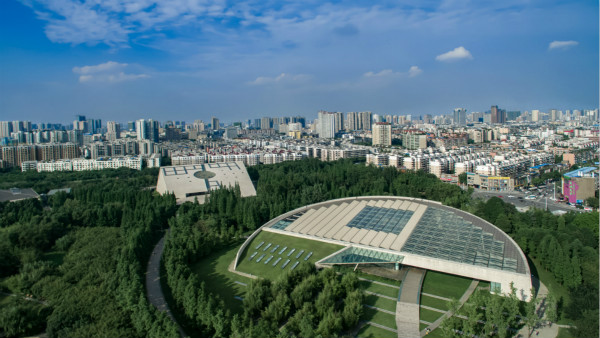Release Time: 2017-04-16

In February 2001, Jinsha site of ancient Shu, which had slept for three thousand years, was brought to light again. After archaeological studies, the site covers an area of around 5 square kilometers, and it was the location of ancient Shu state, the center of ancient civilization in the upper reaches of the Yangtze River from the end of Shang dynasty to the Western Zhou Dynasty (about 3200-2650 years ago). Archaeologists discovered important relics in the site, including sites of big palaces, large venues for sacrificial activities, living areas and large cemetery, and excavated the densest ivories and the largest number of goldware and jade ware among all the sites of the same period. Most of the Chinese historians argue that as the origin of Chengdu, Jinsha site substantiated the more than 3000-year-old history of Chengdu's urban history.
On April 16, 2007, a theme museum, which aims to protect, study and disseminate the Jinsha Site and Jinsha culture, was built on the locale of the Site. Ten years have passed, does Jinsha Site Museum fulfill its mission as scheduled? What is the correlation between the museum and the city of Chengdu? How she interprets the topic “Site Protection and Urban Development”?
A Decade History of Jinsha Site Museum
2007
Jinsha Site Museum officially opened to the public. Precious treasures including the Sun and Immortal Birds Gold Ornament showed up in China's Top 10 Exhibitions Approaching Jinsha for the First Time.
2008
The museum became a shelter for Chengdu citizens shocked by the earthquake. In the same year, the national 4A scenic spot showed gratitude to those fighting to help others by providing them free admissions.
2009
The 1st Jinsha Sun Festival opened to Chengdu citizens where they enjoyed lantern shows, a variety of performances, exhibitions, and a beautiful flower garden.
2011
Jinsha Memory (2001-2011)—Photo Exhibition of the 10th Anniversary of Jinsha's Discovery was successfully held. The first sign language interpreter in the museum introduced to the hearing impaired audiences on how the one-decade development of Jinsha promoted the city’s growth and brought happiness to people’s lives.
2012
The first special exhibition Treasures of Yinxu Ruin started dialogues between ancient Shu cultures and other civilizations from home and abroad. In the same year, Jinsha has been designated as a National First-class Museum and a National Archeological Site Park.
2013
The museum took part in Google Art Project. And the first deer cub was born in Jinsha Deer Garden.
2014
The museum won various prizes and became one of the top 10 museums in China; In the same year, Jinsha was designated as a pilot unit in the national smart museum project, exploring its way through digital guidance, interactive exhibitions, etc.
2015
The newly-opened Youth Education Area attracted teenagers with a variety of interesting and instrumental programs during summertime. Ancient Shu relics traveled to the United States, South Korea, and Austria, becoming a big success.
2016
The image "Golden Monkey Hugging the Sun and Immortal Birds” appeared on Times Square in New York, sending new year's best wishes to the world.
2017
The museum continues on its mission of studying and disseminating the ancient Shu culture. We expect you to take part in this journey for the next decade.
Conclusion
As “city eye”, museum not only matters to urban wealth, but also is closely bound up with residents’ lives, interpersonal relationships and urban environment. In the increasingly homogeneous world, building landmark museums provides a city with essential cultural elements to establish its cultural identity, while tourist attraction, cultural resource, sense of belonging of citizens and subjective well-being brought by the theme museum are also important indicators of modern urban development. From the astounding excavation of the Jinshan Site to the completion and opening of the Jinsha Site Museum, “Sun and Immortal Bird” spreads its wings and soar high with beliefs of ancient Shu people and dreams of modern people. What beautiful interactions will the museum and people of the city have? How will Jinsha Site Museum and Chengdu’s urban development write new chapters? Undoubtedly this will always be a surprising answer.






